Ancient Korinth and Isthmia photos
So I feel like posting photos/telling about my 5-week stay in Greece :) Here you go!
So background info for anyone who missed it:
My mom and I took a week-long vacation in Athens, Greece the very first week of May (most of that week I spent sick/injured in the hotel room while my mom went off on her own adventures and left me feeling guilty), after which she went back to the US, I took a 2 day trip to Vienna, Austria, and then returned to Greece and made my way to the small village of ANCIENT KORINTH. The village has 3 little grocery stores, about 5-6 restaurants, a butchers, a bakery, and a few random shops. It also has a few nice gift/souvenir shops, because it is the site of what was once the capital of Ancient Greece in the Classical and Hellenistic periods, and also the Roman capital of Greece during the Roman period of rule. It attracts thousands of tourists a day, who come in those big buses, but they only stay for a few hours. Because there's not much more to the village than the ruins.
The ruins, however, are amazing, and some of my favorite anywhere I've seen. The ancient city is very extensive and only the main "downtown" part has been excavated (the ancient city stretches past the boundaries of the current village), but even just that part is huge. And throughout different parts of the village, there are other randomly excavated sites upon which you can wander around on (and also climb on, jump on, have a picnic on, etc, without anyone caring).
Ancient Korinth, as I said, was extremely important in ancient times. The book of Corinthians in the Bible is all about the city. It is where the apostle Paul lived for a number of years. Alexander the Great and his father also lived there for a while. And many of the most famous of ancient Greece's rulers and historical figures had some connection to the city, whether they lived there or ruled there, or not.
http://en.wikipedia.org/wiki/Ancient_Corinth
And for those with a knowledge of Greek art, the Corinthian order of columns was named after ancient Korinth :)
And those of you who have read Oedipous Rex should recognize the city as the place where Oedipous was raised as the adopted son of the king and queen of Korinth (also spelled with a C, Corinth). And Jason (as in the Argonauts, Golden Fleece, etc) supposedly abandoned Medea in Korinth. So yes, the place I lived is a pretty big deal ;)
If you're at all interested in Greek history, read Wikipedia's entry on Ancient Corinth! It's full of interesting stuff :) I find it really exciting that I lived in such a place.
However, the big city there fell into disuse after Roman times, and even the town that remained was eventually destroyed by an earthquake. The people resettled in the current city known as NEW KORINTH (or just Korinth, or as my group called it, Regular Korinth =P), which is right on the sea. It is a 15 minute bus ride north. We visited there often, because its much more exciting than Ancient Korinth =P
Here's a map: http://www.culture-travel.net/images/Misc2/16.jpg
You can find Korinth (Corinth) west of Athens, by Megara. Ancient Korinth (my village, the historically famous one) is right south of Corinth on the map (but is not labeled).
Ok so! I was one of 6 OSU students on this trip, which was worth 15 credit hours and lasted 4 weeks (added to my first week with my mom, I was there a total of 5 weeks). We were to be working on/with the OSU sponsored Excavations at ISTHMIA, a site that is on the other side of the little tiny landbridge that has Corinth on its north end (Isthmia is on its south end). Isthmia is about a 15-20 minute drive from Ancient Korinth.
The site of Isthmia was incredibly famous in ancient times, but nowadays not so much. In fact, its not even open to visitors, which is a shame because its amazing. The Greek government is filled with so much bureaucratic red tape and crap that its taking forever to get a museum open, hours fixed, staff/guards hired, etc.
It was one of 4 sites of the PanHellenic games, the most famous of which as held at Olympia (the first Olympic games). There were also the Isthmian Games, which were nearly as popular and famed. Alexander the Great and the Roman emperors (all of them!) came every year it was held, along with thousands of Greek citizens and nobility. They were held at what is called the Sanctuary of Poseidon at Isthmia. Since its so close to the sea, Poseidon was naturally the presiding god over the games and the site. The site included a stadium, a racetrack, several temples, a Greek bath, a later Roman bath (which is what we worked on!), a marketplace, a residential and office area (yes, they had administrative offices), and more. The site is huge.
Unfortunately for us, we did not do any active excavating at the Roman Bath until our last week there. because the excavation season doesn't begin until June (there was a larger group of students arriving after we left), we were stuck with all of the preparations, record-keeping, organization and cleaning, administrative, computer, and office work of the excavations. Which kept us busy, but got pretty tedious :( But the last week was amazing, because we actually dug, and we actually discovered some very exciting things!
Anyways, enough talk, now its time for some photos!!
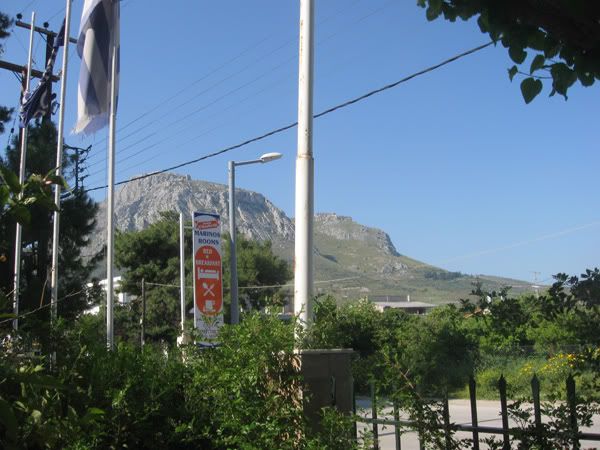
Rooms Marinos, where we stayed in two-person hotel rooms (a hotel by Greek standards, which is more of a very casual, slightly crappy bed-and-breakfast). In the background is the grand and majestic AcroKorinth, the mountain on which was a fortress.
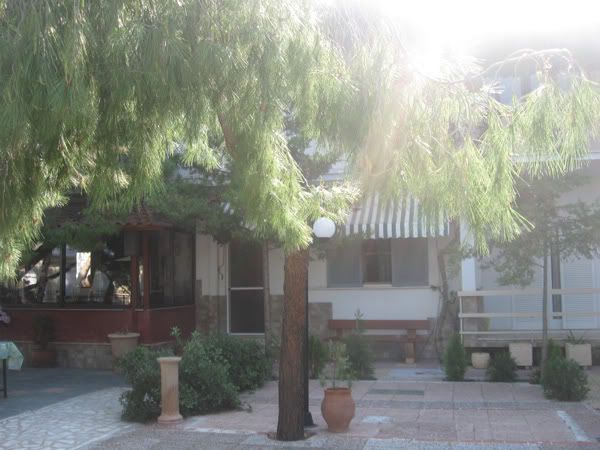
Front of the hotel.
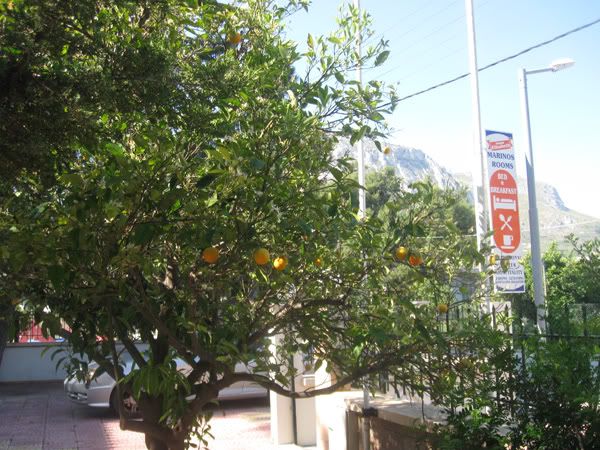
Orange trees (yes, those are oranges) grow naturally all over Greece.

The hotel is owned and operated by a family who lives in this yellow house, a pretty fancy home by Greek standards. They live across the street from the hotel.
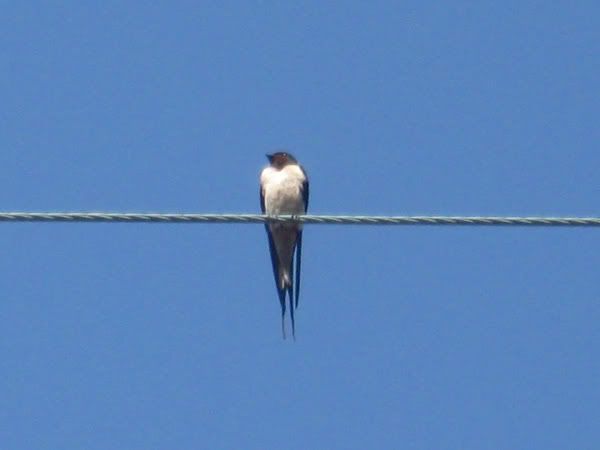
Swallows are everywhere!

As are dogs. but not usually dogs on roofs. Just on this roof (different dogs, too, lol)
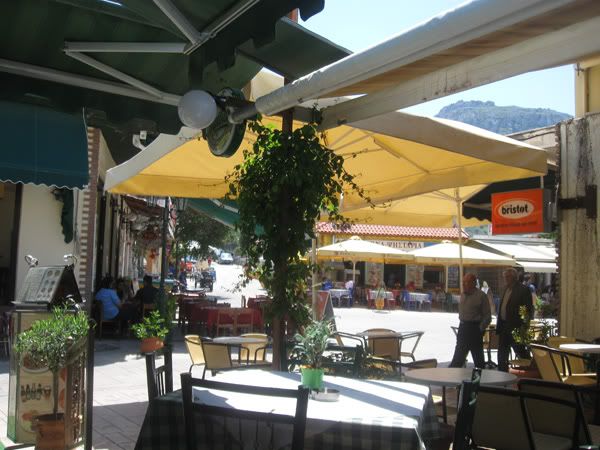
The plateia, or central square of the village, where the restaurants are.
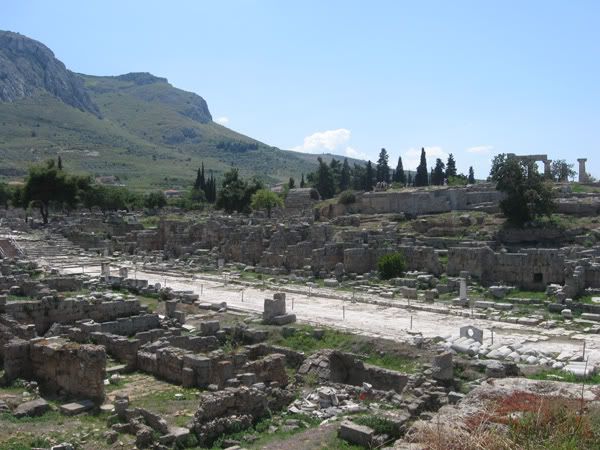
The ruins of Ancient Korinth. The main boulevard of the city.
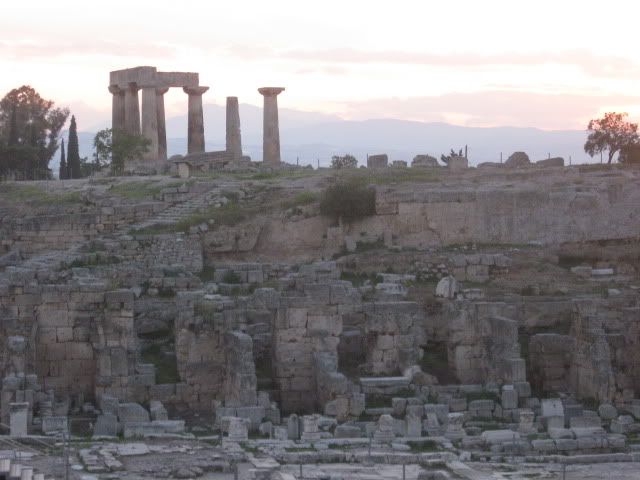
The famous Temple of Apollo at Korinth.
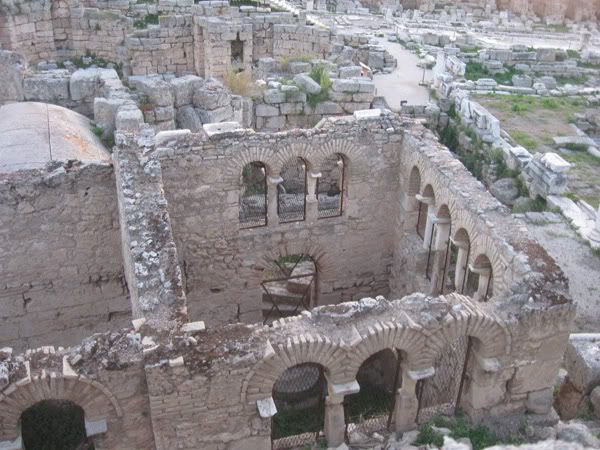
I think there was a fountain and springs here...
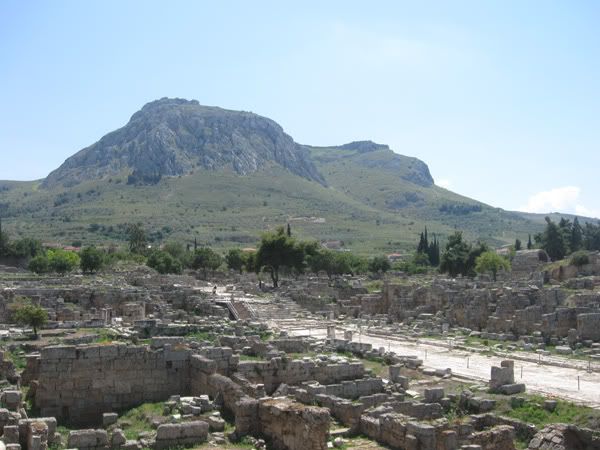
AcroKorinth and ruins.
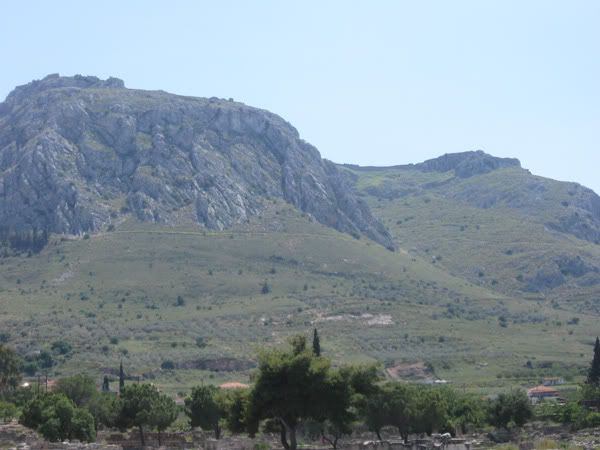
More AcroKorinth
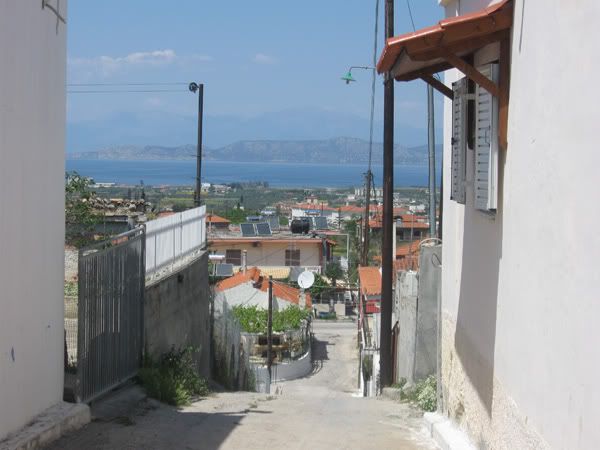
A small alley looking north, where one can see the sea, some other villages, and perhaps a bit of Regular Korinth.
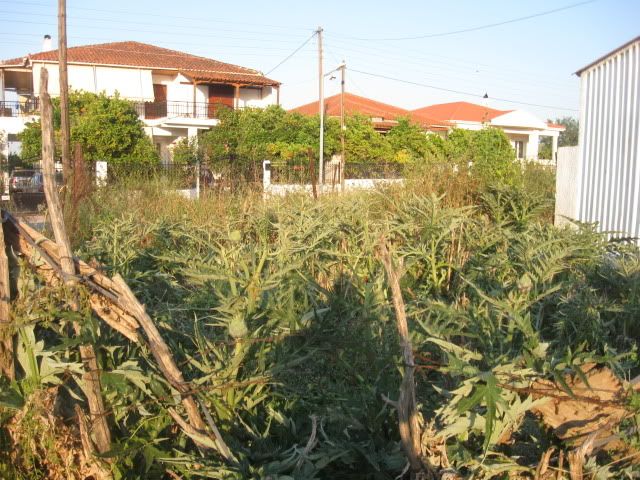
This house had a patch of artichokes. Can you see them? :)
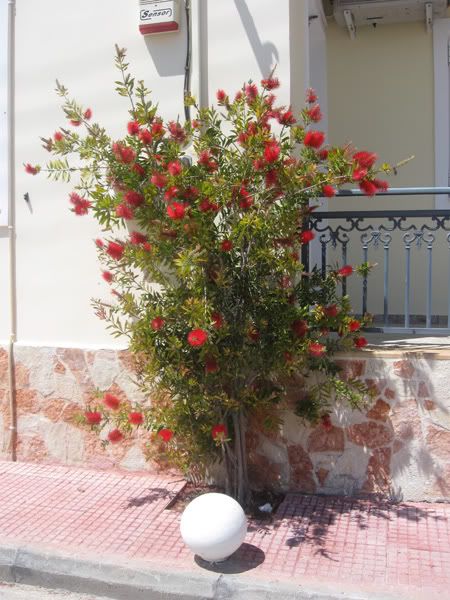
The villagers really cared about their gardens and flowers. Almost every house had beautiful and exotic, and vibrantly colored flowers behind their walls, or by the sidewalk.
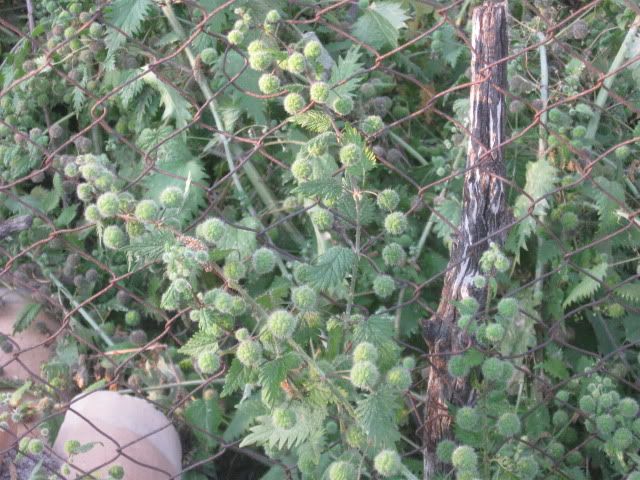
Poisonous nettles grew wild everywhere, too...
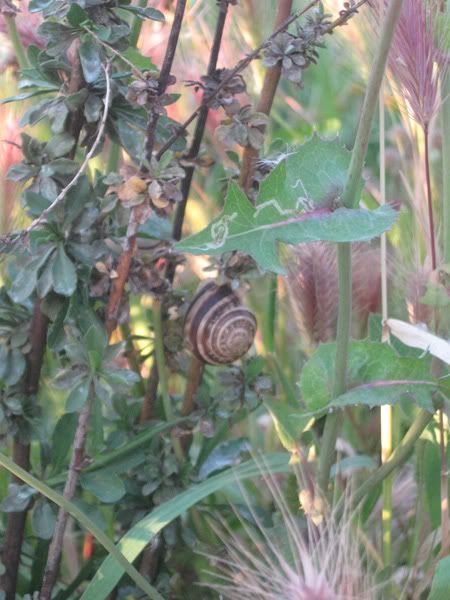
And these guys are crazy numerous. You find them everywhere, on everything, and big, too! It was terrible when it rained (once in the 5 weeks I was there, love the Mediterranean <3), because they were all over the road, and you couldn't help stepping on them, and they're so big (and inch or two across) that they make this terrible CRUNCH! and it was really disturbing >_>
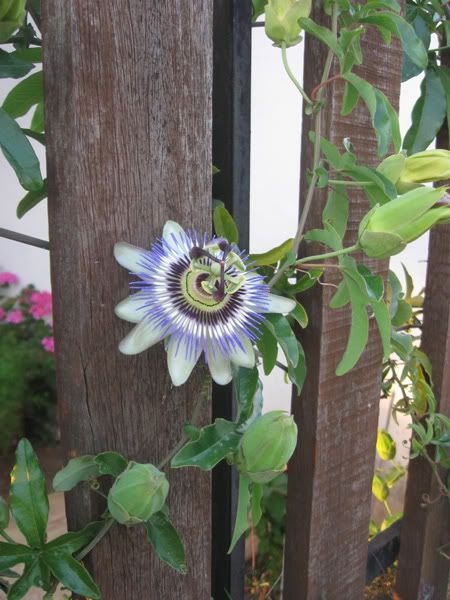
Mysterious cool flower
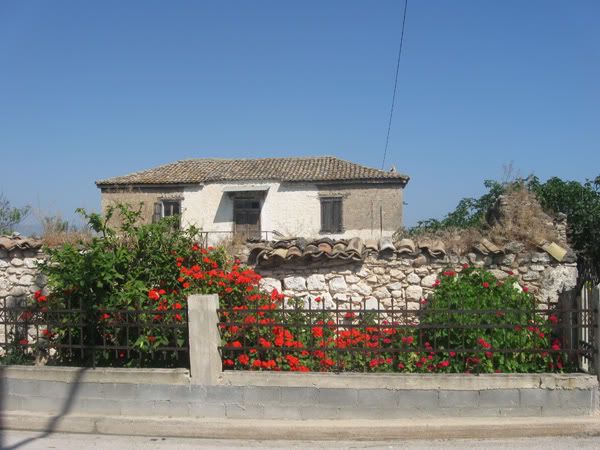
A picturesque house with flowers
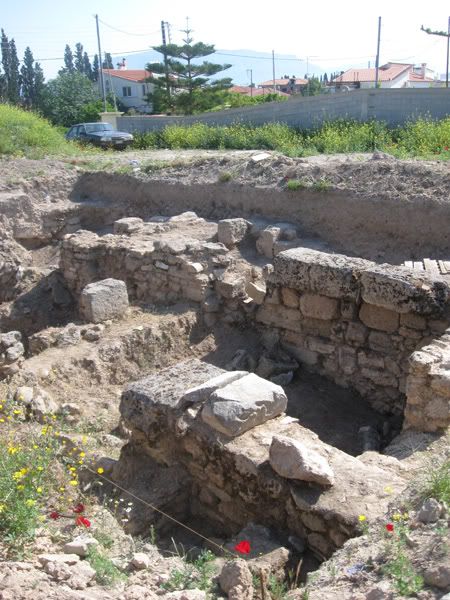
Random ruins elsewhere in the village
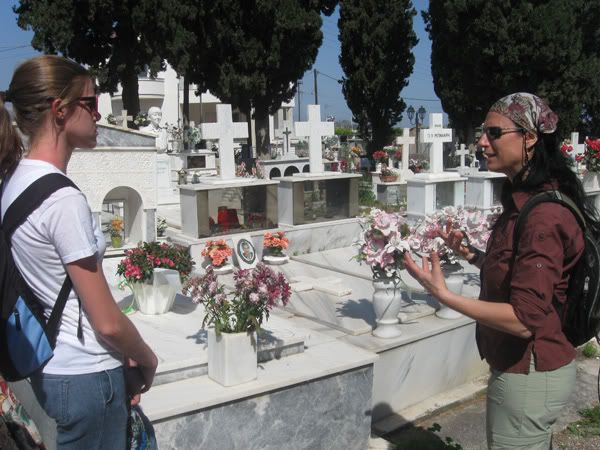
The prof's wife Lita, on the right, is the world's leading expert on modern Greek funerary practices :o Here she is talking to Erin O. about the cemetery.

And an ancient Christian/Byzantine cemetery! The heads all face the rising sun, because scripture says that when the Messiah returns, he will return with the sun...so when that happens, the dead guys in the graves can just stand up and be facing him already, without having to put in the (admittedly minimal) effort of turning around lol.
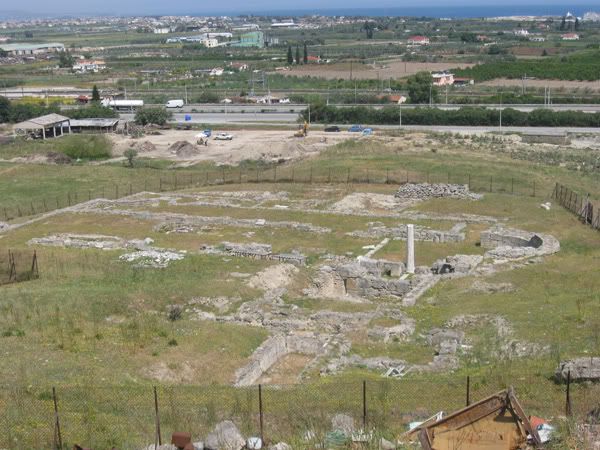
The remains (not much) of an ancient Byzantine basilica church. You can see the outline very well! If you've ever studied architecture, art history, or ancient Rome, you should have been able to instantly recognize what this is :)
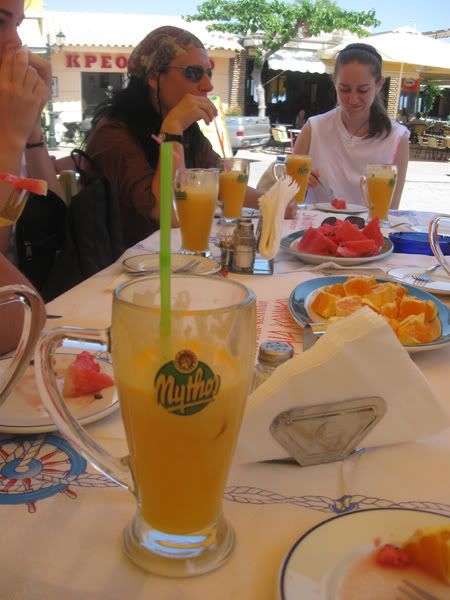
Lita and Michelle sitting at Niko's, where we were often invited in for free fresh orange juice, watermelon, and orange slices on the always scorching afternoons. But only us OSU peeps, no one else >:D
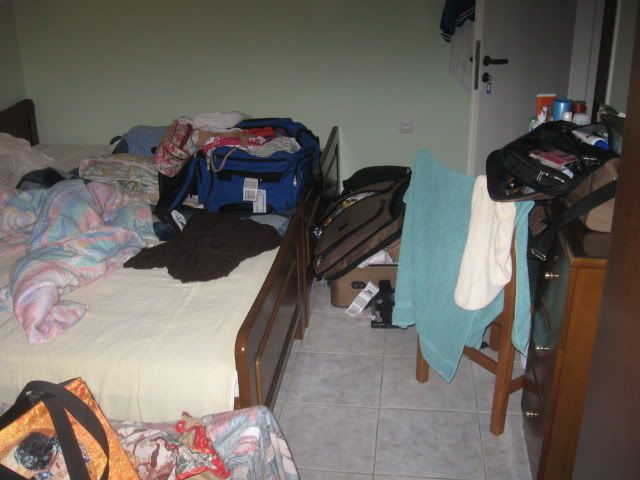
This was the hotel room that Brooke, Erin O., and I shared the first night. We got switched later, because this room did NOT accommodate all of us and our crap.
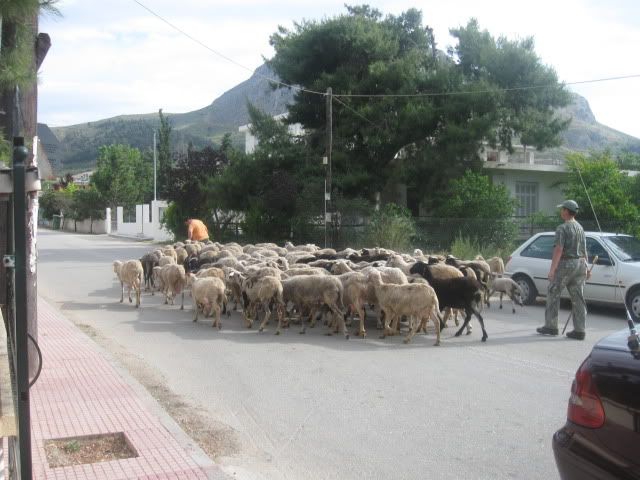
Goats and sheep being herded past our hotel. We all got excited whenever this happened, and would run down the halls alerting each other, and then running outside as a group to watch XD
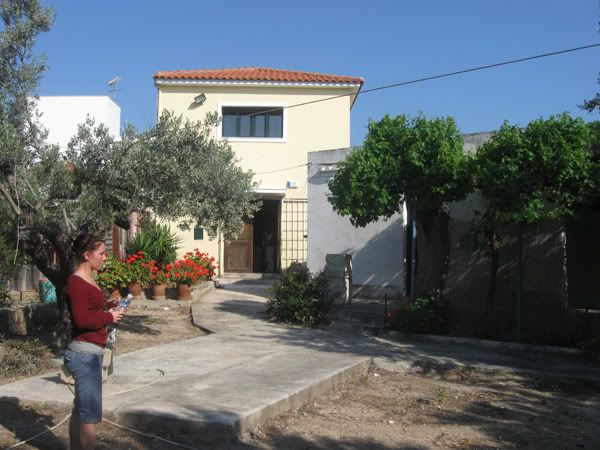
The excavation house at Isthmia! And Brooke in the front yard.
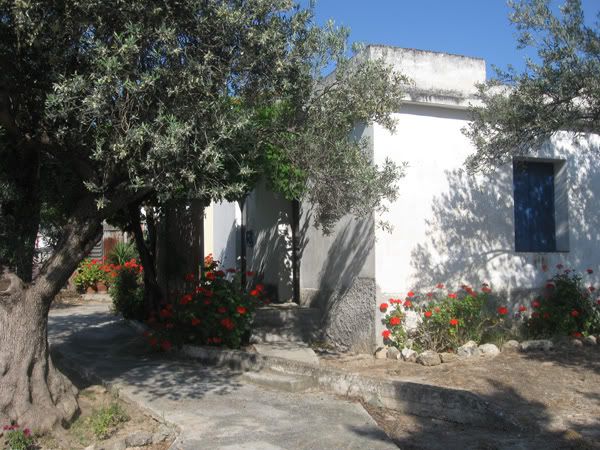
The other building at the site, which was mostly a storage shed, painted in the traditional colors of Greece.
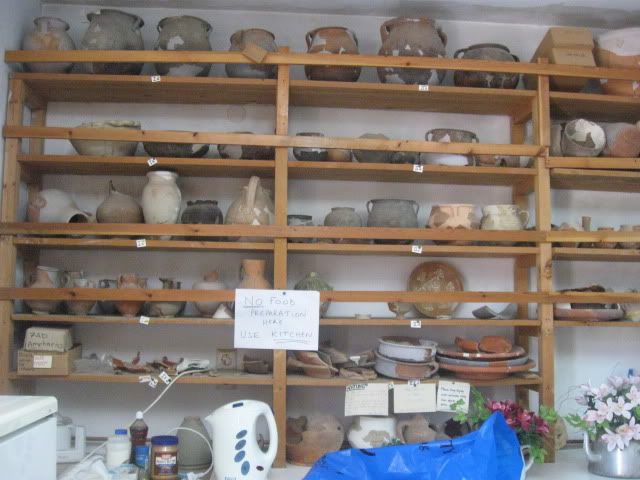
A look at the shelves of pieced-together ancient pottery lining one wall of the downstairs entry room.

Orthodox Christian symbols from the age of the Crusades
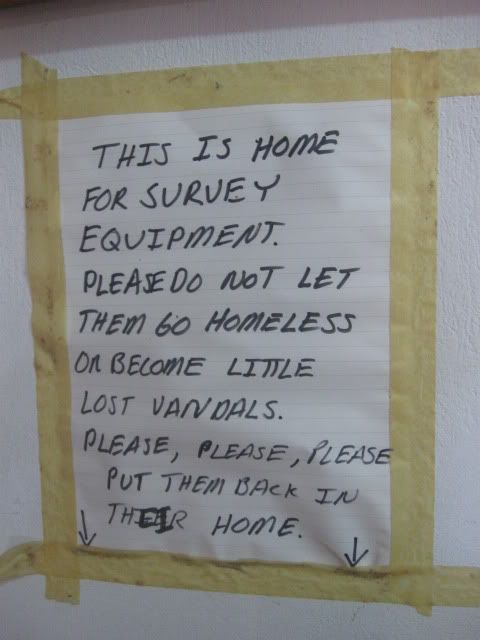
The people who worked here in the 70s and 80s obviously had a silly sense of humor. They left a few notes around.
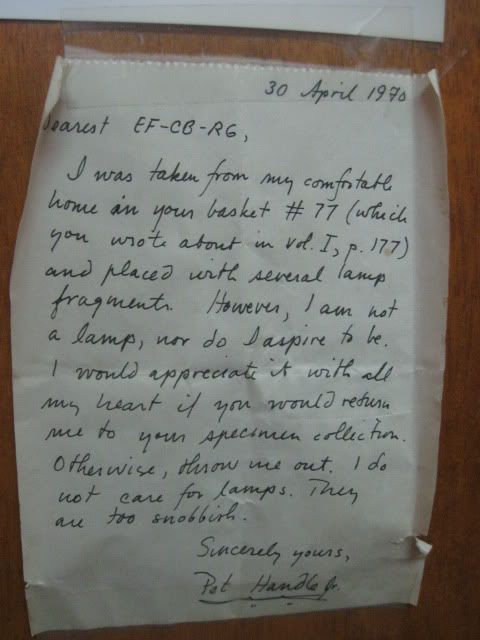
I love this one <3
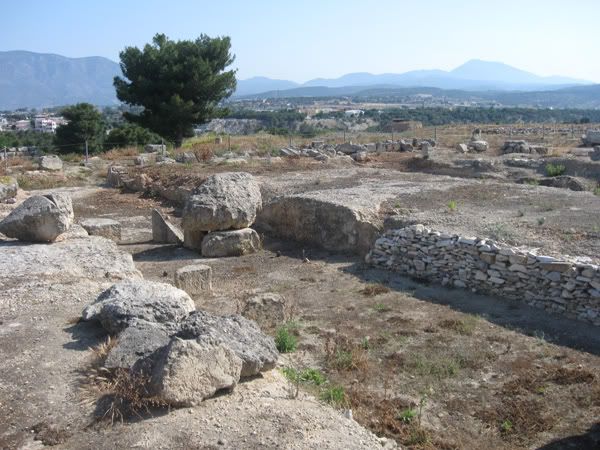
The remains of the temple of Poseidon :( It got burnt down, and then the Romans and later on, the Christians, used its remains to build a giant wall.
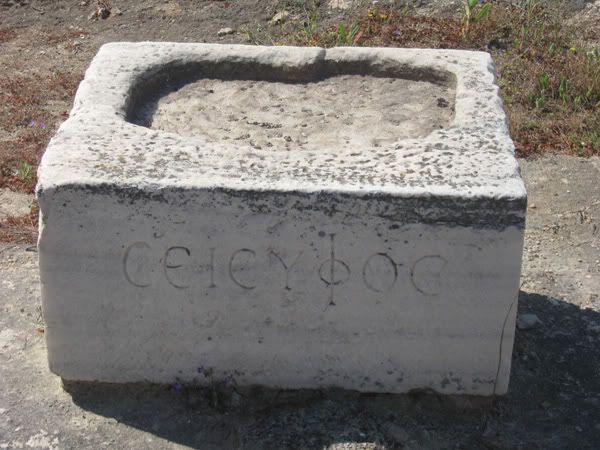
This held a statue of Cicyphus, a relatively big figure in mythology, and also the founder of Korinth when it became the famous city it was in Classical times.
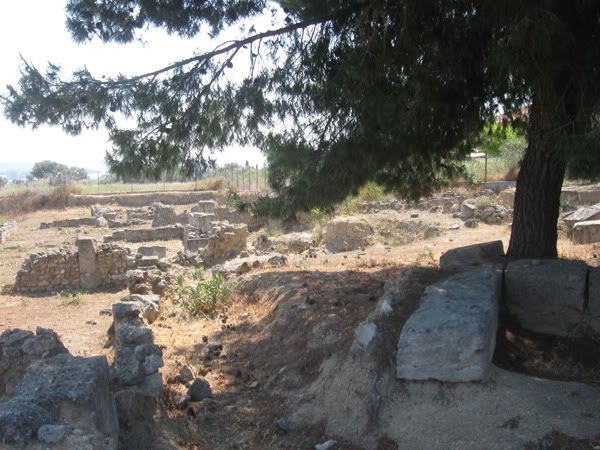
This and the following are all at Isthmia.

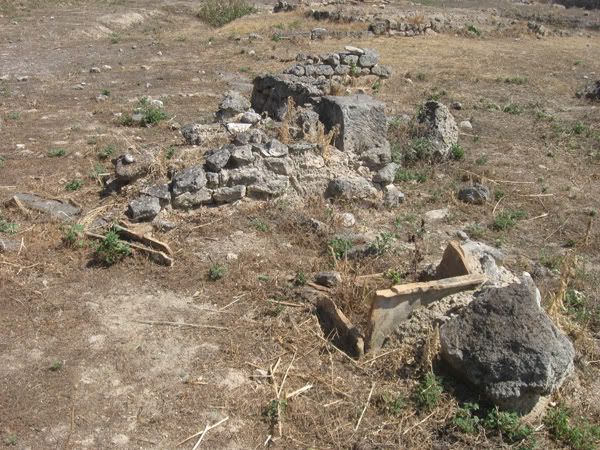
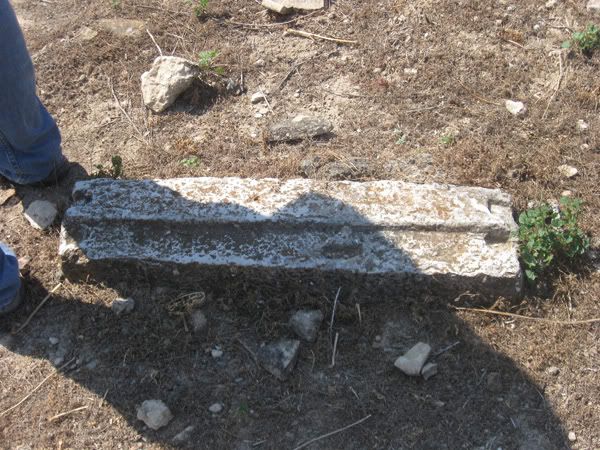
A mysterious doorjamb which archaeologists are still trying to figure out, since it has two hinges...
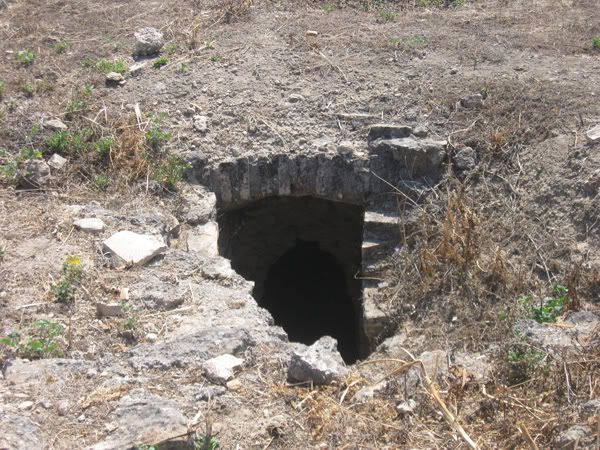
Mysterious cavern, thought to have possibly been a wine cellar or olive storage
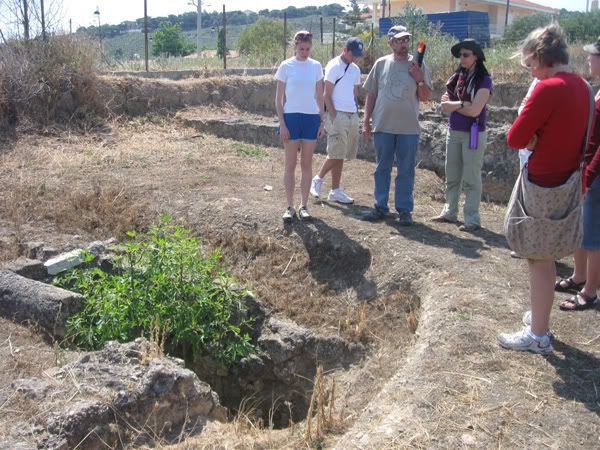
The other end of the little cavern
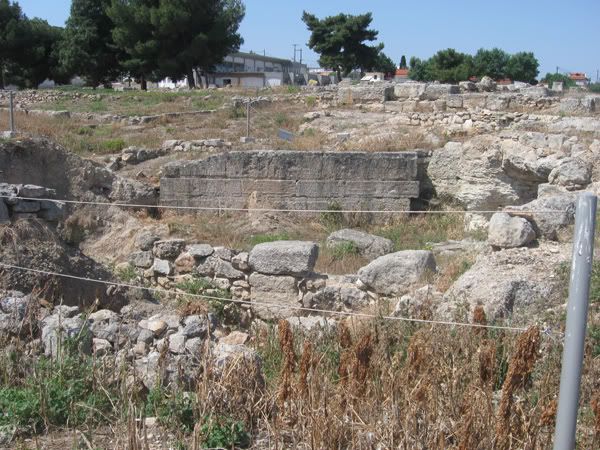
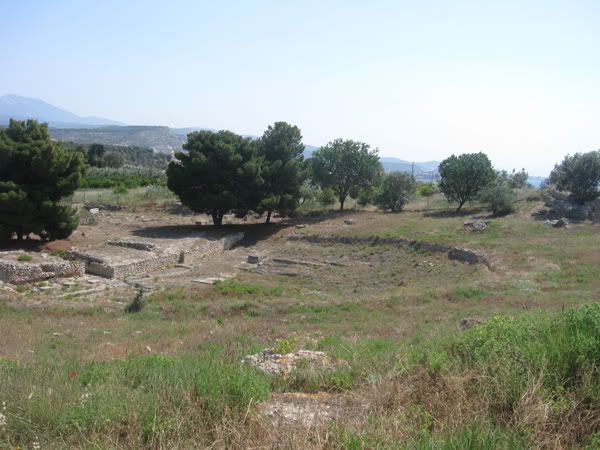
I bet you can't guess what this was ;) (a theater!)
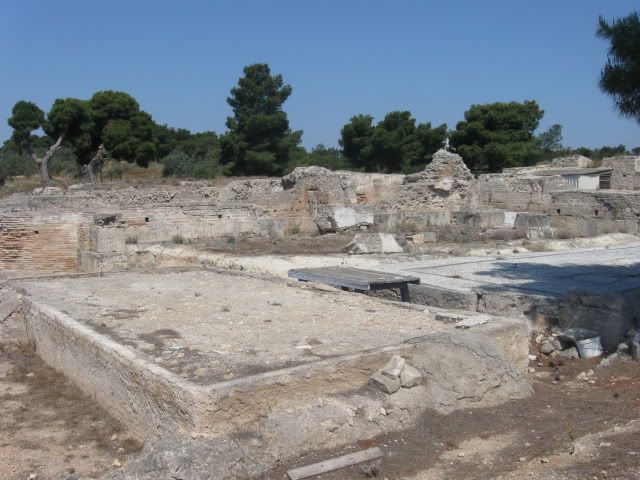
Some of the Roman bath. let me tell you, it was huge (but not nearly as big as the baths of Caracalla in Rome, holy crap...). Romans loved their bath houses.
(only one or two rooms would contain water, and it was often only a foot or two high...so it was more a social setting where nobility would come to gossip and relax in the sauna than to actually get clean)
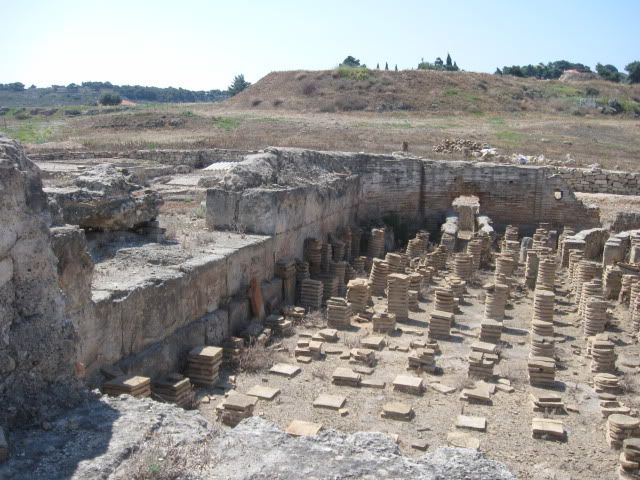
Here is the remarkably in tact heating system of the calderium (sp?), the hot room. There would have been a floor above this, and fires lit right under the floor, with about 3 feet of space for the workers to crawl around keeping them lit (and often dying in the process because of the dangers of fires in such an enclosed space).
Whew. More photos soon!! I hope you'll take a look at these, and read what I've written about it, and even check out those Wikipedia pages. And if you are curious about anything, don't hesitate to ask! I enjoy discussing the site, the history, the culture, etc.
So background info for anyone who missed it:
My mom and I took a week-long vacation in Athens, Greece the very first week of May (most of that week I spent sick/injured in the hotel room while my mom went off on her own adventures and left me feeling guilty), after which she went back to the US, I took a 2 day trip to Vienna, Austria, and then returned to Greece and made my way to the small village of ANCIENT KORINTH. The village has 3 little grocery stores, about 5-6 restaurants, a butchers, a bakery, and a few random shops. It also has a few nice gift/souvenir shops, because it is the site of what was once the capital of Ancient Greece in the Classical and Hellenistic periods, and also the Roman capital of Greece during the Roman period of rule. It attracts thousands of tourists a day, who come in those big buses, but they only stay for a few hours. Because there's not much more to the village than the ruins.
The ruins, however, are amazing, and some of my favorite anywhere I've seen. The ancient city is very extensive and only the main "downtown" part has been excavated (the ancient city stretches past the boundaries of the current village), but even just that part is huge. And throughout different parts of the village, there are other randomly excavated sites upon which you can wander around on (and also climb on, jump on, have a picnic on, etc, without anyone caring).
Ancient Korinth, as I said, was extremely important in ancient times. The book of Corinthians in the Bible is all about the city. It is where the apostle Paul lived for a number of years. Alexander the Great and his father also lived there for a while. And many of the most famous of ancient Greece's rulers and historical figures had some connection to the city, whether they lived there or ruled there, or not.
http://en.wikipedia.org/wiki/Ancient_Corinth
And for those with a knowledge of Greek art, the Corinthian order of columns was named after ancient Korinth :)
And those of you who have read Oedipous Rex should recognize the city as the place where Oedipous was raised as the adopted son of the king and queen of Korinth (also spelled with a C, Corinth). And Jason (as in the Argonauts, Golden Fleece, etc) supposedly abandoned Medea in Korinth. So yes, the place I lived is a pretty big deal ;)
If you're at all interested in Greek history, read Wikipedia's entry on Ancient Corinth! It's full of interesting stuff :) I find it really exciting that I lived in such a place.
However, the big city there fell into disuse after Roman times, and even the town that remained was eventually destroyed by an earthquake. The people resettled in the current city known as NEW KORINTH (or just Korinth, or as my group called it, Regular Korinth =P), which is right on the sea. It is a 15 minute bus ride north. We visited there often, because its much more exciting than Ancient Korinth =P
Here's a map: http://www.culture-travel.net/images/Misc2/16.jpg
You can find Korinth (Corinth) west of Athens, by Megara. Ancient Korinth (my village, the historically famous one) is right south of Corinth on the map (but is not labeled).
Ok so! I was one of 6 OSU students on this trip, which was worth 15 credit hours and lasted 4 weeks (added to my first week with my mom, I was there a total of 5 weeks). We were to be working on/with the OSU sponsored Excavations at ISTHMIA, a site that is on the other side of the little tiny landbridge that has Corinth on its north end (Isthmia is on its south end). Isthmia is about a 15-20 minute drive from Ancient Korinth.
The site of Isthmia was incredibly famous in ancient times, but nowadays not so much. In fact, its not even open to visitors, which is a shame because its amazing. The Greek government is filled with so much bureaucratic red tape and crap that its taking forever to get a museum open, hours fixed, staff/guards hired, etc.
It was one of 4 sites of the PanHellenic games, the most famous of which as held at Olympia (the first Olympic games). There were also the Isthmian Games, which were nearly as popular and famed. Alexander the Great and the Roman emperors (all of them!) came every year it was held, along with thousands of Greek citizens and nobility. They were held at what is called the Sanctuary of Poseidon at Isthmia. Since its so close to the sea, Poseidon was naturally the presiding god over the games and the site. The site included a stadium, a racetrack, several temples, a Greek bath, a later Roman bath (which is what we worked on!), a marketplace, a residential and office area (yes, they had administrative offices), and more. The site is huge.
Unfortunately for us, we did not do any active excavating at the Roman Bath until our last week there. because the excavation season doesn't begin until June (there was a larger group of students arriving after we left), we were stuck with all of the preparations, record-keeping, organization and cleaning, administrative, computer, and office work of the excavations. Which kept us busy, but got pretty tedious :( But the last week was amazing, because we actually dug, and we actually discovered some very exciting things!
Anyways, enough talk, now its time for some photos!!

Rooms Marinos, where we stayed in two-person hotel rooms (a hotel by Greek standards, which is more of a very casual, slightly crappy bed-and-breakfast). In the background is the grand and majestic AcroKorinth, the mountain on which was a fortress.

Front of the hotel.

Orange trees (yes, those are oranges) grow naturally all over Greece.

The hotel is owned and operated by a family who lives in this yellow house, a pretty fancy home by Greek standards. They live across the street from the hotel.

Swallows are everywhere!

As are dogs. but not usually dogs on roofs. Just on this roof (different dogs, too, lol)

The plateia, or central square of the village, where the restaurants are.

The ruins of Ancient Korinth. The main boulevard of the city.

The famous Temple of Apollo at Korinth.

I think there was a fountain and springs here...

AcroKorinth and ruins.

More AcroKorinth

A small alley looking north, where one can see the sea, some other villages, and perhaps a bit of Regular Korinth.

This house had a patch of artichokes. Can you see them? :)

The villagers really cared about their gardens and flowers. Almost every house had beautiful and exotic, and vibrantly colored flowers behind their walls, or by the sidewalk.

Poisonous nettles grew wild everywhere, too...

And these guys are crazy numerous. You find them everywhere, on everything, and big, too! It was terrible when it rained (once in the 5 weeks I was there, love the Mediterranean <3), because they were all over the road, and you couldn't help stepping on them, and they're so big (and inch or two across) that they make this terrible CRUNCH! and it was really disturbing >_>

Mysterious cool flower

A picturesque house with flowers

Random ruins elsewhere in the village

The prof's wife Lita, on the right, is the world's leading expert on modern Greek funerary practices :o Here she is talking to Erin O. about the cemetery.

And an ancient Christian/Byzantine cemetery! The heads all face the rising sun, because scripture says that when the Messiah returns, he will return with the sun...so when that happens, the dead guys in the graves can just stand up and be facing him already, without having to put in the (admittedly minimal) effort of turning around lol.

The remains (not much) of an ancient Byzantine basilica church. You can see the outline very well! If you've ever studied architecture, art history, or ancient Rome, you should have been able to instantly recognize what this is :)

Lita and Michelle sitting at Niko's, where we were often invited in for free fresh orange juice, watermelon, and orange slices on the always scorching afternoons. But only us OSU peeps, no one else >:D

This was the hotel room that Brooke, Erin O., and I shared the first night. We got switched later, because this room did NOT accommodate all of us and our crap.

Goats and sheep being herded past our hotel. We all got excited whenever this happened, and would run down the halls alerting each other, and then running outside as a group to watch XD

The excavation house at Isthmia! And Brooke in the front yard.

The other building at the site, which was mostly a storage shed, painted in the traditional colors of Greece.

A look at the shelves of pieced-together ancient pottery lining one wall of the downstairs entry room.

Orthodox Christian symbols from the age of the Crusades

The people who worked here in the 70s and 80s obviously had a silly sense of humor. They left a few notes around.

I love this one <3

The remains of the temple of Poseidon :( It got burnt down, and then the Romans and later on, the Christians, used its remains to build a giant wall.

This held a statue of Cicyphus, a relatively big figure in mythology, and also the founder of Korinth when it became the famous city it was in Classical times.

This and the following are all at Isthmia.



A mysterious doorjamb which archaeologists are still trying to figure out, since it has two hinges...

Mysterious cavern, thought to have possibly been a wine cellar or olive storage

The other end of the little cavern


I bet you can't guess what this was ;) (a theater!)

Some of the Roman bath. let me tell you, it was huge (but not nearly as big as the baths of Caracalla in Rome, holy crap...). Romans loved their bath houses.
(only one or two rooms would contain water, and it was often only a foot or two high...so it was more a social setting where nobility would come to gossip and relax in the sauna than to actually get clean)

Here is the remarkably in tact heating system of the calderium (sp?), the hot room. There would have been a floor above this, and fires lit right under the floor, with about 3 feet of space for the workers to crawl around keeping them lit (and often dying in the process because of the dangers of fires in such an enclosed space).
Whew. More photos soon!! I hope you'll take a look at these, and read what I've written about it, and even check out those Wikipedia pages. And if you are curious about anything, don't hesitate to ask! I enjoy discussing the site, the history, the culture, etc.